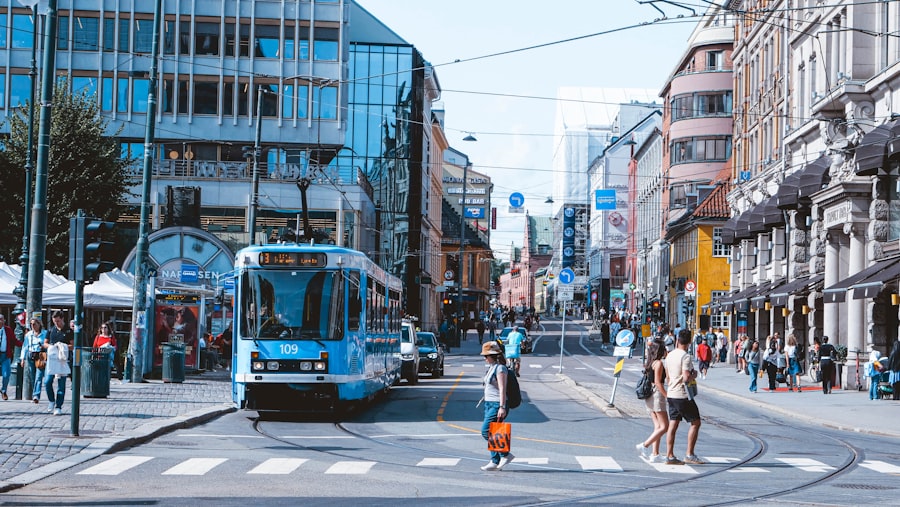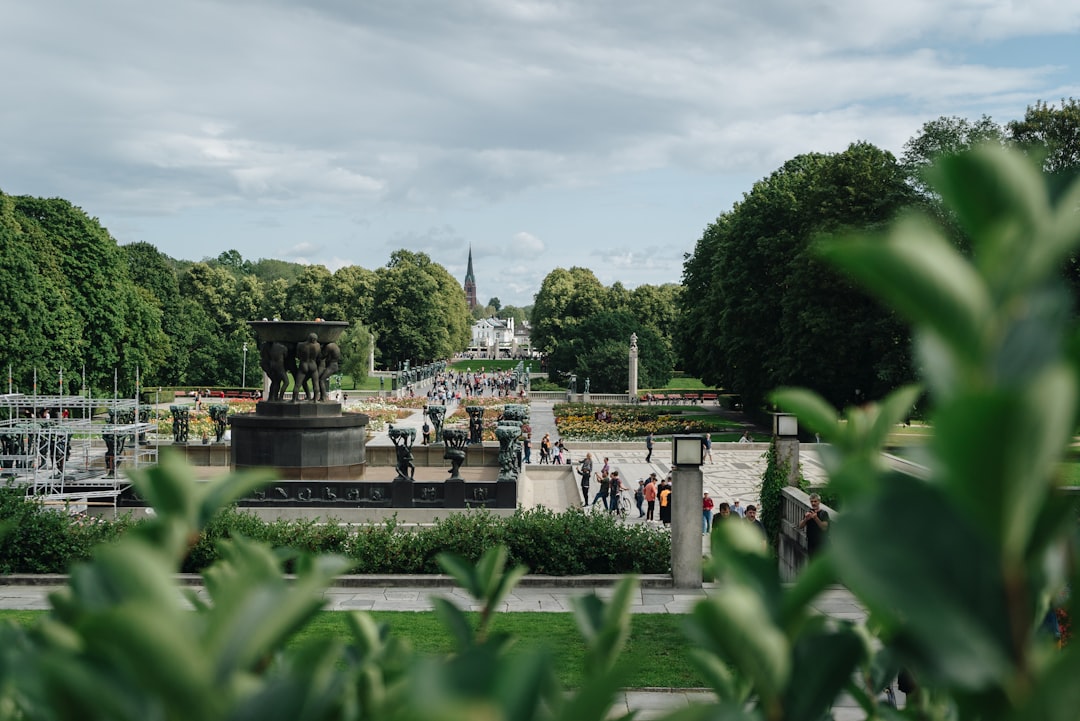The Julebord, or Christmas table, is a cherished tradition in Norway that encapsulates the spirit of the festive season. This celebration typically occurs during the weeks leading up to Christmas and serves as a gathering for friends, family, and colleagues to come together and enjoy a sumptuous feast. The origins of the Julebord can be traced back to ancient Norse customs, where feasting was an integral part of winter solstice celebrations.
Over time, this tradition has evolved into a modern-day event that combines elements of both cultural heritage and contemporary socialising. In essence, the Julebord is not merely a meal; it is an experience steeped in camaraderie and joy. It provides an opportunity for people to reconnect, share stories, and indulge in traditional Norwegian delicacies.
As the festive season approaches, many companies and organisations host their own Julebord events, making it a significant aspect of workplace culture in Norway. For expatriates and newcomers, understanding this tradition is essential for integrating into Norwegian society and embracing the local customs. Schedule a one-on-one consultation with our relocation specialists to simplify your move to Norway. https://norwayrelocation.no/one-hour-strategy-session/
Summary
- Julebord is a traditional Norwegian Christmas celebration that involves feasting, socialising, and gift-giving.
- At a Julebord celebration, expect a festive and lively atmosphere with plenty of food, drinks, and music.
- The dress code for Julebord events is typically smart-casual, with some parties having a more formal attire requirement.
- Traditional Norwegian Julebord foods include dishes like pinnekjøtt (cured lamb ribs) and lutefisk (dried whitefish), accompanied by drinks like aquavit and Christmas beer.
- Etiquette at Julebord parties includes showing respect for the host, participating in the festivities, and being mindful of cultural customs.
What to Expect at a Julebord Celebration
Attending a Julebord celebration is an experience filled with warmth and merriment. Typically, these gatherings are characterised by a festive atmosphere, with decorations that reflect the holiday spirit. Expect to see twinkling lights, candles, and traditional ornaments that create a cosy environment.
The event usually begins with a welcome drink, often a glass of gløgg (a spiced mulled wine), which sets the tone for an evening of indulgence and cheer. The highlight of the Julebord is undoubtedly the food. Guests can anticipate a lavish buffet featuring an array of traditional dishes, from cured meats to hearty fish preparations.
The evening often includes speeches, toasts, and perhaps even some light-hearted entertainment, such as singing or games. It is a time for laughter and connection, where the stresses of daily life are momentarily set aside in favour of celebration and togetherness.
Dress Code for Julebord Events

When it comes to dressing for a Julebord event, it is essential to strike the right balance between festive flair and sophistication. The dress code can vary depending on the nature of the gathering; however, it is generally advisable to opt for smart-casual attire. For men, this might mean wearing dress trousers paired with a button-up shirt and perhaps a blazer.
Women often choose elegant dresses or skirts with festive colours that reflect the holiday spirit. In some cases, particularly for corporate Julebord events, attendees may be encouraged to wear traditional Norwegian attire known as “bunad.” This beautifully crafted clothing represents various regions of Norway and adds a unique touch to the celebration. Regardless of the specific dress code, it is important to remember that the Julebord is a festive occasion, so incorporating elements of holiday cheer into your outfit can enhance the overall experience.
Traditional Norwegian Julebord Foods and Drinks
The culinary offerings at a Julebord are nothing short of spectacular, showcasing the rich flavours of Norwegian cuisine. A typical spread may include dishes such as ribbe (roast pork belly), pinnekjøtt (dried and salted lamb ribs), and lutefisk (dried fish treated with lye). These hearty dishes are often accompanied by an assortment of sides, including red cabbage, potatoes, and rich gravies that elevate the meal to new heights.
In addition to the savoury delights, desserts play a significant role in the Julebord experience. Traditional sweets such as krumkake (a delicate waffle cookie) and riskrem (rice pudding with raspberry sauce) are often served to round off the meal on a sweet note. To complement the food, guests can expect an array of beverages, including aquavit (a traditional Scandinavian spirit) and various wines that enhance the flavours of the dishes being served.
Etiquette and Customs at Julebord Parties
Understanding the etiquette surrounding Julebord celebrations is crucial for making a positive impression. One key custom is the importance of punctuality; arriving on time demonstrates respect for your hosts and fellow guests. Upon arrival, it is customary to greet everyone warmly and engage in small talk before diving into the festivities.
This initial mingling sets a friendly tone for the evening. Another important aspect of Julebord etiquette is participating in toasts. It is common for guests to raise their glasses in honour of various individuals or groups throughout the evening.
When making a toast, it is polite to maintain eye contact with those you are addressing and to keep your speech brief yet heartfelt. Additionally, be mindful of dietary restrictions or preferences when discussing food choices; showing consideration for others’ needs reflects well on your character.
Navigating the Language Barrier at Julebord Events

For expatriates or newcomers who may not be fluent in Norwegian, navigating language barriers at Julebord events can be daunting. However, many Norwegians are proficient in English and are more than willing to engage in conversation with non-Norwegian speakers. It is advisable to approach conversations with an open mind and a willingness to learn; asking questions about local customs or traditions can serve as excellent icebreakers.
If you find yourself struggling with language during discussions, do not hesitate to express your challenges politely. Most attendees will appreciate your efforts to communicate and may even switch to English to ensure you feel included in the festivities. Additionally, consider brushing up on some basic Norwegian phrases before attending; even simple greetings or expressions of gratitude can go a long way in fostering goodwill among your peers.
Tips for Socialising and Networking at Julebord Gatherings
Julebord gatherings present an excellent opportunity for socialising and networking within both personal and professional circles. To make the most of these events, approach conversations with genuine curiosity about others’ experiences and backgrounds. Engaging in active listening will not only help you build rapport but also allow you to learn more about Norwegian culture.
When mingling at a Julebord event, try to circulate among different groups rather than sticking with familiar faces throughout the evening. This approach will enable you to meet new people and expand your network significantly. Additionally, do not shy away from sharing your own experiences or stories; this exchange fosters connections and creates memorable interactions that can last well beyond the festive season.
Cultural Differences to Keep in Mind at Julebord Celebrations
As with any cultural event, being aware of potential cultural differences can enhance your experience at a Julebord celebration. Norwegians tend to value modesty and humility; therefore, it is essential to strike a balance between sharing your achievements and allowing others to shine as well. Avoid boasting or dominating conversations; instead, focus on creating an inclusive atmosphere where everyone feels valued.
Another cultural nuance to consider is the concept of “koselig,” which embodies the idea of coziness and warmth during social gatherings. Embracing this sentiment can help you connect more deeply with your fellow attendees. Engage in light-hearted conversations, share laughter, and appreciate the simple joys of being together during this festive time.
How to Handle Alcohol at Julebord Parties
Alcohol often plays a significant role in Julebord celebrations; however, it is essential to approach drinking with moderation and mindfulness. While it is common for guests to enjoy drinks throughout the evening, being aware of your limits is crucial for maintaining decorum and ensuring everyone has an enjoyable experience. If you choose to partake in alcoholic beverages, consider alternating between alcoholic drinks and water or non-alcoholic options.
This practice not only helps you stay hydrated but also allows you to pace yourself throughout the evening. Additionally, if you are unsure about drinking customs or preferences among your peers, do not hesitate to ask; most attendees will appreciate your thoughtfulness regarding their comfort levels.
Julebord Gift-Giving Etiquette
Gift-giving during Julebord celebrations can vary depending on the nature of the gathering. In some cases, it may be customary for guests to bring small gifts for their hosts as a token of appreciation for their hospitality. These gifts need not be extravagant; thoughtful gestures such as homemade treats or locally sourced items are often well-received.
If you are attending a workplace Julebord event, it may be more appropriate to refrain from bringing gifts unless specifically invited to do so. Instead, focus on expressing gratitude through your presence and participation in the festivities. Regardless of whether gift-giving is involved, always remember that sincere appreciation goes a long way in fostering positive relationships during this festive season.
Enjoying the Festivities and Making the Most of Julebord Season in Norway
As you immerse yourself in the joyous atmosphere of Julebord celebrations across Norway, take time to savour each moment fully. Embrace the opportunity to connect with others while enjoying delicious food and drink amidst festive surroundings. The essence of Julebord lies not only in its culinary delights but also in its ability to bring people together in celebration.
For those who may be new to Norway or looking to enhance their cultural understanding further, consider enrolling in Norwegian courses at the NLS Norwegian Language School in Oslo. These courses provide invaluable insights into language nuances while fostering connections with fellow learners who share similar interests in Norwegian culture. By investing time in learning the language, you will find yourself better equipped to navigate social situations like Julebord events with confidence and ease.
In conclusion, participating in Julebord celebrations offers an enriching experience that encapsulates the warmth and joy of Norwegian culture during the festive season. By understanding traditions, embracing etiquette, and engaging with fellow attendees meaningfully, you can create lasting memories while celebrating this cherished custom in Norway.
Register for a Norwegian class at the NLS Norwegian Language School now!

